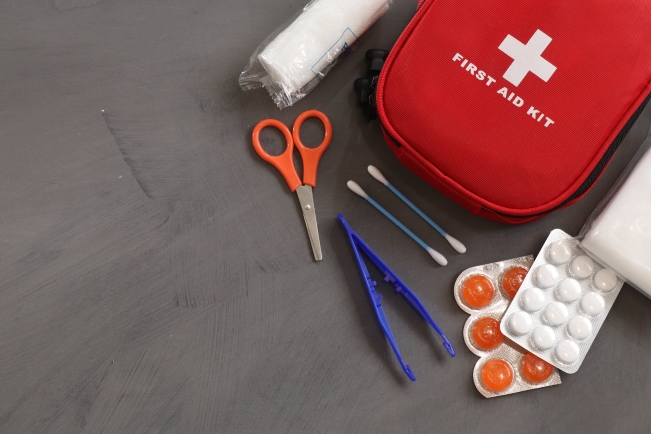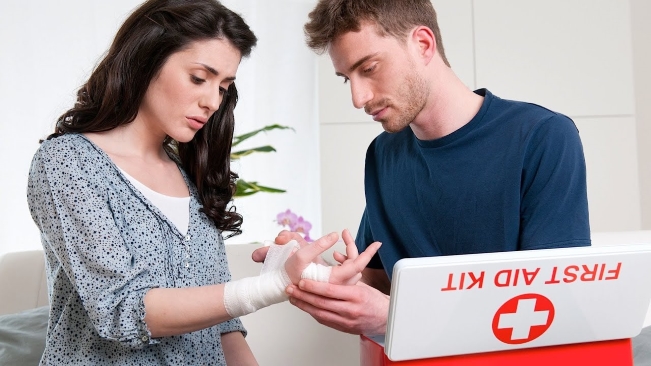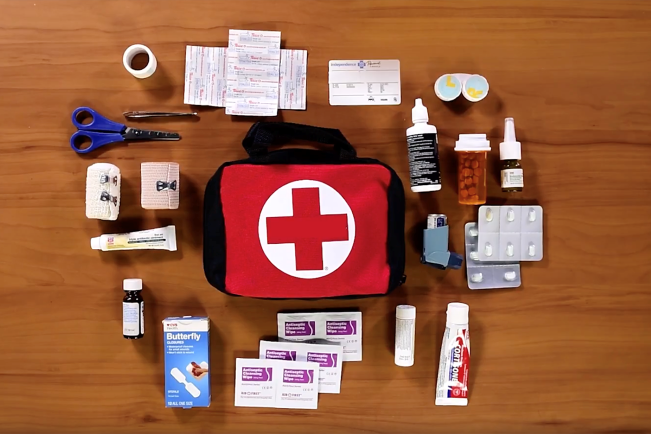Accidents happen all the time. We can get hurt at any time, anywhere. And while we can barely do anything to prevent accidents, we can be prepared the best way we can, so we act quickly when they do. Having a first aid kit at hand is important in any given situation and can be vital when a person’s bleeding. When bleeding’s severe, it can be dramatic and distressing. Being prepared for such critical situations can be life-saving.
When Is Bleeding Considered Severe?
There’s minor and severe bleeding. Minor bleeding includes nose bleeding, small cuts, and grazes. In smaller wounds, bleeding stops naturally in most cases. What we then need to do is clean the place, dry the area and apply a protective dressing.
However, there are times when bleeding is severe and life-threatening. Major trauma is often accompanied by severe bleeding. And in some cases, it’s because of rupture or injury of more prominent veins and arteries. These are some symptoms and signs you should check:

- Skin surface wounds with, or without, a foreign object embedded into it.
- Bruising or discolouration of the skin: may imply that there’s internal bleeding or organ damage.
- Loss of normal function in the injured area.
- Pale, cold, sweaty skin.
- Abdominal or chest wound.
- Blood’s spurting out of the injury.
In all of these cases, when the injury is severe, and the person is very unwell, you should call 000 for an ambulance as soon as possible. Meanwhile, you can take several steps to help stop bleeding. This can be crucial for volume retention and preventing hypovolemic shock. If you do it properly, you can make all the difference for patients in the prehospital environment. These are the basic steps to help stop bleeding, along with a list of first aid bleeding control products that are an essential part of every first aid kit.
First Aid Bleeding Control Steps
1. Ensure Your Safety
If you have already been through some first aid education, or you’re a paramedic yourself, you know how important this first step is. To help others in a given moment and future, you have to protect yourself and your family. This means you must take steps for infection control and BSI (body substance isolation) precautions. If we didn’t understand the importance of self-isolation, we surely understand it now, after going through a pandemic.
So, what can you do? Be sure to wear disposable gloves and a head mask with eye protection if needed. You should ensure you have sterile gauze pads, rolled gauze, and tape in your first aid bleeding control kit. When there’s severe bleeding and someone’s life is in danger, it’s easy to forget to take such precautions, so being prepared in advance can be helpful. Of course, there might be situations when you won’t have the time to think about your safety. Our instincts can make us react quickly without protecting ourselves. This is completely okay, we’re human. But every time you can, make sure to take precautions and protect yourself.
2. Apply Direct Pressure
What is the most effective method for controlling most types of bleeding? Once you’ve put your gloves on and get the gauze pads, use them to apply firm pressure directly on the wound. If the pads get soaked in blood, don’t remove them. Instead, put some more on until you stop the bleeding. If the bleeding continues, use clean towels, linens, and whatever comes to your hand. This is the most common used bleeding control technique, and it’s successful in most cases for controlling external bleeding.

Once you control the bleeding, you can bandage the gauze pad. It should be tight enough to apply firm pressure but not limit circulation. Check for pulse around the wound. If it’s absent, loosen the bandage a little bit. Remember that you shouldn’t remove the dressing once you apply it until the patient gets to the hospital.
3. Elevate the Injured Area
This is an important step if there’s an injured extremity. You want to raise the injured area above the heart level to decrease circulation in that part and prevent more blood loss. You should apply this step along with direct pressure. If you can’t manage to do it yourself, ask the patient to help if possible. Or, ask someone else to help you raise the injured area while applying direct pressure. For an arm, you can also use a sling whenever possible. There are situations when it’s best not to elevate an injured extremity, like when the injury restricts mobility (in the case of a fraction or impaled object, for example).
4. Use the Pressure Points
If you’ve applied direct pressure and elevation and bleeding continues, you can use the pressure points method. Two major pressure points are the inside of the upper arm and groin when the leg bends in the hip. If the bleeding is from an arm or leg, you should apply direct pressure at these points and pressure on the wound. You can use a tourniquet for this, but use it only if you know (read if you’ve been trained) how. The goal is to preserve as much blood as possible.
5. When There’s a Foreign Body
If there’s a foreign body embedded in the wound, don’t remove it. Instead, apply padding on either side of the object and build it up to avoid further pressure. You can do that with rolled bandage with the criss-cross method or using a folded triangle.
6. Waiting for Help
Now that you’ve done everything that’s in your power, you can’t do anything but wait for the help of paramedics. Or, if you’re a paramedic yourself, for the help of the doctors from the nearest hospital. You can still do something, though. Make sure the patient rests as much as possible. Monitor the wound and patient’s pulse. Check for blood leaks through the bandage. If that happens, apply more pressure to the wound and a second pad over the first.

List of Bleed Kit First Aid Products
You can keep a first aid kit at home, in a tactical bag, or as part of your essential outdoor hiking gear. You can have one in your car and your motorcycle. No matter where it is, a bleeding control kit should be a part of every one of your first aid kits. This is a list of the products it should contain:
- 2x Nitrile Glove Pairs
- Face Shield
- 8x Wound Cleaning Wipes
- 2x Eye/Wound Wash
- Emergency Bandage
- Trauma Shears
- Eye Pad
- 2x Triangular Bandage
- 2x Combines
- 2x Wound Closure Strips
- Assorted Bandaids
- Snake Bite Bandage
- 2x Burn Dressing
- Sterile Dressing Scissors & Forceps
- Tourniquet
- Emergency Blanket
You can accommodate this list to your needs and preferences. If you think some of these aren’t necessary, remove them, or add up if you need more. Make sure to be prepared, and you may someday save someone’s life.
























